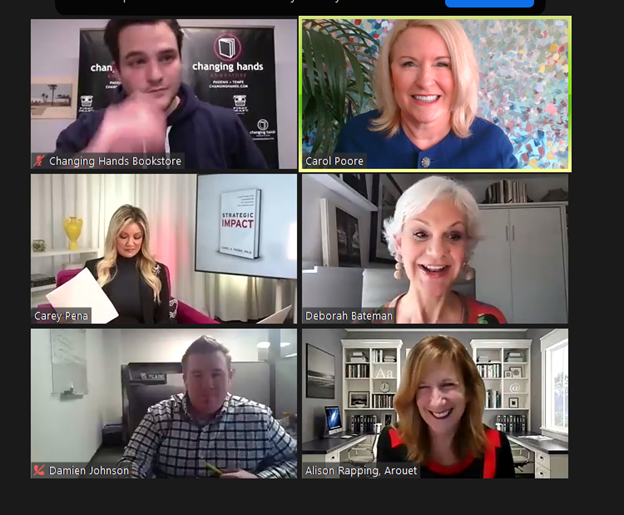With limited-to-no-budgets for strategic planning, it’s a tragedy that many small companies and nonprofits bypass this essential, future-shaping process.
With a bit creativity, a strategic planning program can be hosted in a very cost-effective way.
First and foremost, for smaller to mid-size organizations, I recommend that organizations put the most focus (and any available budget) on selecting an outstanding strategic planner/facilitator – a leader who has a solid track record in assisting executive leadership with structuring a brilliant program and delivering results.
I cannot emphasize enough the importance of putting your budget focus on hiring an effective strategic planning expert who meshes with your organization’s culture and can effectively assist your leadership team with structuring a results-oriented, efficient process.
The consultant’s efforts should result in a well-planned series of strategy workshops, a written strategic plan including strategic and operational goals, a companywide, institutionalized goal tracking system, and a summary overview presentation noting strategic goals for each of the organization’s pillars. (These are basic deliverables for any strategic planning consultant.)
Here are other steps you can take to create a cost-effective, exciting strategic planning program.
1. If your organization needs to survey customers and constituents, use a cost-effective email survey system such as SurveyMonkey. The program is easy-to-use and rolls up the results into bar charts and visuals.
2. Months prior to your strategic planning workshops with board and staff, seek a donated or “nearly free” facility if you choose to conduct an offsite workshop. (I highly recommend getting out of the grind and selecting a convenient, spacious venue that allows your group to mingle and move into break-out groups.)
Rather than renting a hotel (super expensive!) – why not seek out a corporate partner or larger nonprofit with a facility to share?
For example, in my hometown of Phoenix, the Valley of the Sun United Way graciously allows nonprofit organizations to reserve conference rooms and workshop spaces for as little as $100 per day. Several of our state universities also allow space use and may provide guest speakers in key business, healthcare and social service topics.
3. Make full use of volunteer speakers for a keynote or opening panel to spotlight industry trends. Trade association CEOs can be an excellent source of business-specific trends to set the stage for your strategy discussions.
4. Conduct a series of forward-thinking trend and customer listening sessions using virtual technology such as Zoom. This allows you to bring in global experts at no cost, adding convenience and savings while allowing opportunities for renowned experts to join your Board and planning team.
5. Seek corporate sponsorship for the strategic planning program, or components such as a sponsored lunch. Consider supply chain and business partnership sponsorships for food, giveaway books, pens, coffee breaks and other program perks.
6. For designing the written plan, if your organization lacks publication design expertise, seek student publication design and illustration support, tapping local college design and PR faculty to explore opportunities for internships and special projects.
7. To create insight and buy-in among your board and senior leadership team during the strategy workshop process, create small-group analysis teams to complete doable analysis. This brings multiple talents and perspectives to the table – a wealth of donated expertise.
For example, assignments could include analyzing competitors, summarizing trends (political, economic, social, technology, environmental, and legal), and completing a “SWOT” analysis. Ask each team to present their findings within 10 minutes, followed by a brief group discussion to discuss implications for your organization. This creates participation and engagement during the strategy workshop process.
Terminology important to note: Conducting a strategic planning program on a tight budget is NOT the same as creating a “strategic budget.” A strategic budget is a long-term spending plan that helps an organization manage its expenses. Strategic budgets usually span more than one year and align with the organization’s long-term goals.
For instance, a company might want to develop a new geographic market or introduce a new product line. It’s likely for these projects to take longer than a year to produce adequate results, making a strategic budget appropriate. The company uses this tool to allocate resources to different departments and manage potential risks of taking on such ambitious projects.[1]
[1] Indeed Career Guide (2022). “What Is a Strategic Budget? Plus Types and How To Create One.” Source: https://www.indeed.com/career-advice/career-development/strategic-budget#:~:text=A%20strategic%20budget%20is%20a,introduce%20a%20new%20product%20line.




